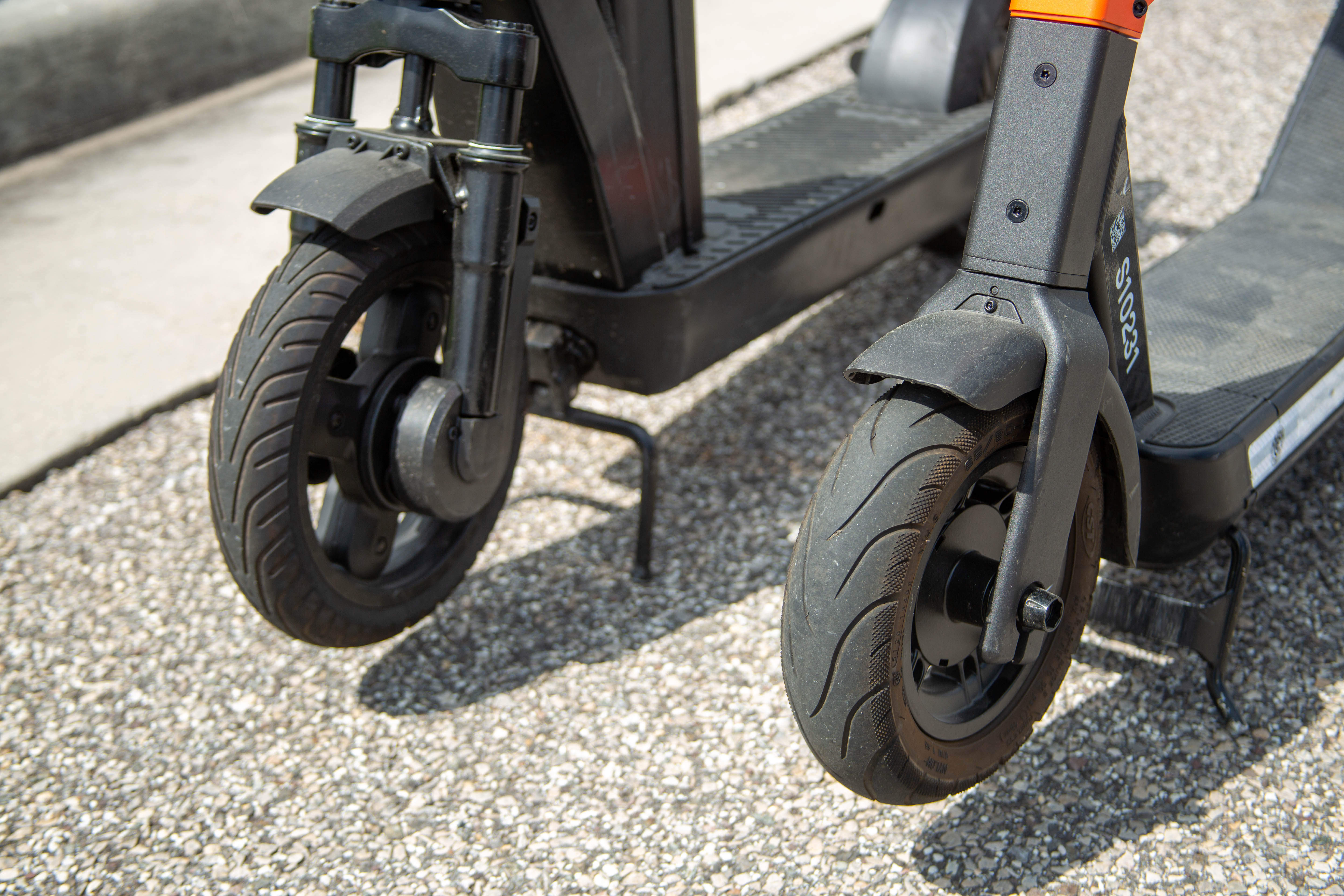In September 2019, Virginia Tech Transportation Institute (VTTI) began the first large-scale naturalistic driving study of electric scooter, also known as e-scooter, riders. Over the span of 18 months, 50 scooters, equipped with forward-facing cameras and other research equipment, collected over 9,000 miles of data from over 200,000 rides on Virginia Tech’s Blacksburg campus. Deployment of the scooters began in August 2019. After being removed from campus during the COVID-19 pandemic, they were redeployed in August 2021 through the academic year.
“The e-scooter deployment at Virginia Tech collected the largest naturalistic e-scooter data set known to date and quantified the safety risks associated with behavioral, infrastructure, and environmental factors,” said Elizabeth White, programs and business manager for VTTI. “This was a very exciting research program to be a part of, and our collaboration with many departments on campus was invaluable to ensuring a safe deployment.
White was the lead researcher of the team that included six other Virginia Tech researchers and other industry experts. The results were recently published in the Journal of Safety Research.
Utilizing VTTI’s proprietary data acquisition system (DAS), researchers found that infrastructure-related factors, the behaviors of e-scooter riders and other around them, and environmental factors all created risk for e-scooter users. They found loss of control related to infrastructure was the greatest contributor, to all crash- and near-crash events, equating to 47 percent. In total, infrastructure caused 67 percent of incidents, followed by the presence of other road users at 19 percent and rider behavior at 14 percent.
Transitions from surfaces, such as moving from gravel or dirt to grass, proved to be the riskiest. Those riders were almost 60 times more likely to have a crash or near-crash experience. This was supported by data showing that riding off a designated path, or off-road, made users nearly 25 times more likely to experience such issues compared to those who rode on a shared-use path.
During the study, there were no crashes between an e-scooter and a moving vehicle captured. Conflicts with other road users were shown to be more avoidable through evasive maneuvers when compared to infrastructure-related events. Researchers believe this is likely caused by riders misjudging the terrain or infrastructure or a lack of skill in navigating those obstacles.
VTTI pioneered DAS in the 1990s and it is frequently used by researchers to provide an in-depth look at driver behaviors. These systems allowed rider behavior, interactions with other road users, and other valuable safety data to be recorded and analyzed for various trends. To date, it has been used on everything from e-scooters to semi-trucks. For the e-scooter study, devices did not film the rider, just the riding behavior in order to maintain rider privacy. Riders also were limited to the Blacksburg campus.
To improve safety for riders, the research team recommends all riders engage in an educational outreach program that discusses the significant risks associated with infrastructure, behavior, and environmental factors. Meanwhile, VTTI and its partners will continue to study ways to improve safety around Blacksburg and beyond.
“We are in continued conversations with campus stakeholders to determine the future of micromobility on the Virginia Tech campus,” said White.
More information on the origins of the research can be found online.
The project was funded in part by the Safety Through Disruption, a grant from the U.S. Department of Transportation’s University Transportation Centers program. The research was conducted in partnership with Ford and Spin.
Ford later sold off Spin.


